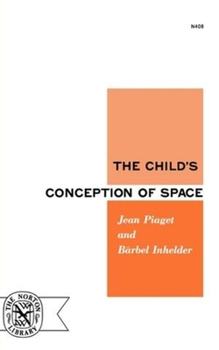The Child's Conception of Space
Select Format
Select Condition 
Book Overview
The nature of space, whether an innate idea, the outcome of experience in the external world, or an operational construction has long been a source of philosophical and speculative psychological discussion. This book deals with the development of the child's notions about space.
Format:Paperback
Language:English
ISBN:0393004082
ISBN13:9780393004083
Release Date:May 1967
Publisher:W. W. Norton & Company
Length:512 Pages
Weight:1.02 lbs.
Dimensions:1.1" x 5.0" x 8.0"
Customer Reviews
1 rating
THE CONTINUATION OF PIAGET'S RESEARCHES
Published by Thriftbooks.com User , 14 years ago
Jean Piaget (1896-1980) was a Swiss developmental psychologist known for his epistemological studies with children. His theory of cognitive development and epistemological view are known as "genetic epistemology". Bärbel Inhelder (1913-1997) was a Swiss developmental psychologist; she was probably Piaget's most well-known co-worker. The authors state in the Preface, "The study of the concept of space, or rather, of the innumerable ideas involved in the concept of space, is for many reasons an indispensable part of child psychology. To begin with, it is clear that if the development of various aspects of child thought can tell us anything about the mechanism of intelligence and the nature of human thought in general, then the problem of space must surely rank as of the highest importance." Here are some representative quotations from the book: "Knowing nothing of the stages which led up to this transformation, the adult assumes that perception involves co-ordinate systems or vertical-horizontal relations right from the outset, when in fact such systems are extremely complicated and are only fully developed by the age of 8 or 9." "In the realm of psychology it would be true to say that the relation of proximity expresses the most fundamental characteristic of the actions by which the subject generates the notion of space." "(Stage I children) have no clear idea of what constitutes a stright line, in the sense of a symbolic image going outside the field of perception, or as regards organizing a new construction within the framework provided by perception. Verbally, they do not know what the word 'straight' means..." "Similarly, from the fact that (the child) can stand up or lie flat, the child at first derives only a strictly empirical awareness of the two postures and nothing more. To superimpose upon this a more general schema he must at some point go outside the purely postural field and compare his own position with those of surrounding objects, and this is something beyond purely empirical knowledge."





